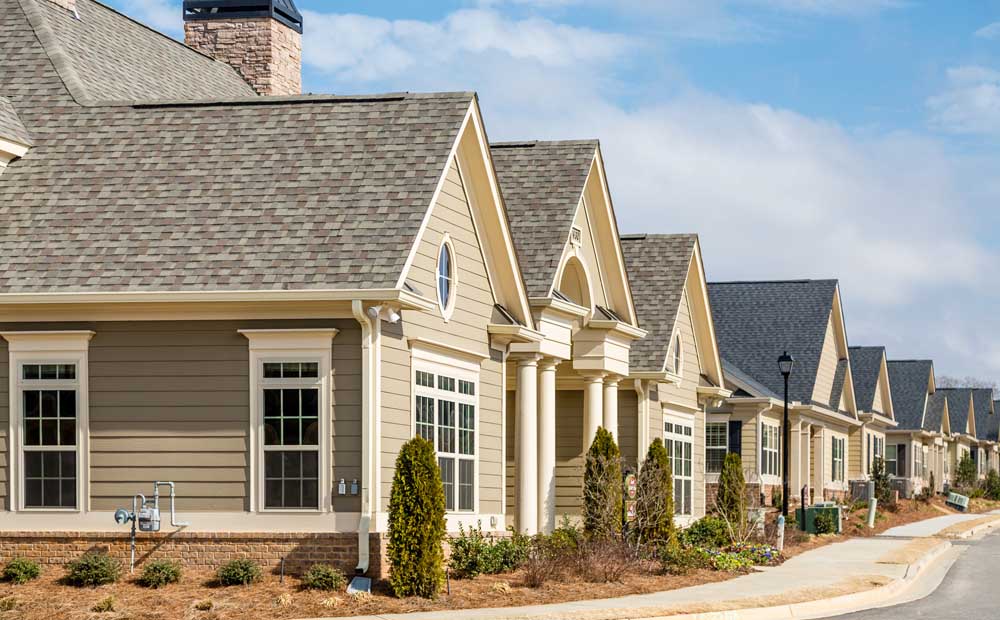Condo or townhouse?
Published 12:00 am Saturday, January 26, 2019

- New Row Houses on street
When it comes to deciding whether a condominium, a townhouse, or a single-family residence is right for you, there are many differences in terms of how you will live, what your costs will be, and whether your purchase qualifies for a conforming loan (a loan that conforms to guidelines set by Fannie Mae and Freddie Mac). With upcoming opportunities for growth in housing, the options in the area will be expanding. If you don’t want to own a single-family residence or have the time to maintain a yard, your best bet may be a condo or a townhouse. So what’s the difference?
A condominium is essentially a description of ownership or management, while a townhome is basically a description of the style of building, not a type of ownership. The two terms are not interchangeable.
Condominium housing requires a group of fellow owners to manage the homeowners association (HOA). The community’s HOA handles the maintenance of common areas—amenities outside your home including the roof, exterior paint, plants, even paths and sidewalks—and administers the CC&Rs (covenants, conditions, and restrictions)which are the rules established for living in the community. This is a big perk of living in a condo—you have no responsibilities other than paying the HOA dues every billing cycle. The collected dues include a per-centage set aside to offset maintenance costs and any unexpected issues that may arise.
With regard to townhomes, the defining difference is that you own the land as well as the home’s exterior; you own only the interior of your condo. This is why sometimes a condo purchase costs less, since it excludes the land.
A neighborhood of townhouses may also include a homeowners association as well as a set of CC&Rs to clarify what is and is not permissible use of the property. Owners pay monthly dues to cover insurance and maintenance of the common areas, as well as trash pickup and snow removal.
Some HOAs have rules to enforce community aesthetics, such as the colors of exterior paint permitted and the types of fencing owners can install—sometimes all the way down to the color of your curtains. Owners also remain financially responsible for exterior maintenance and repair of their townhouses. A townhouse is right for people who want some involvement when it comes to maintaining their homes but do not want the responsibility of maintaining a large lot.
Now for some nitty-gritty Real Estate 301. When purchasing a condo, you must be aware of the percentage of ownership within the development and why it matters. Fannie Mae, Freddie Mac, FHA, and VA financing all look at condominium developments as a whole. Since you, the purchaser, own only the interior of your unit, they must analyze and consider that the remaining property is community owned. Everyone in the development is conjoined and has bearing on the value, including not only the other owners but the association as well. For a government-backed lender to loan on the property, at least 51 percent (or more in some instances) of the units must be full-time owner-occupied units. There is a higher risk for investors to dump their properties if they experience a financial hardship, which is why the government agencies require at least 51 percent to be owner-occupied.
If you cannot secure a conforming loan for a condominium, it is probably considered nonwarrantable. This means it does not meet the standard guidelines for a condominium association. Here are the guidelines:
• One owner cannot own more than 10 percent of the properties in the development (e.g., if a building has 10 units and an owner owns two of them, they exceed the 10 percent ownership rule).
• 51 percent or more of the properties must be owner-occupied.
• 85 percent of the units must be on time with their association dues.
• There cannot be any pending legal action against the HOA (this could also come into play with a townhome purchase—ask your lender).
• No more than 25 percent of the development may be used for commercial purposes.
If your heart is set on acquiring a condo within a development that doesn’t meet these criteria, you may have the option of obtaining a portfolio loan, but you have to ask. If the HOA has a current legal action pending, any type of financing could be at risk and it would be considered a no-go. And really, why would you want to invest in a development with a lawsuit on its hands? It could be over parking spots or when the roof needs repair, but other lawsuits are not as simple—for instance, who is responsible when windows have leaked and there is water damage in the walls, the window installer or the window manufacturer?
Not all townhomes belong to an HOA, but that is rare. Townhomes usually share a wall between the living spaces or the garages. If there is not a collective HOA for repairs and future maintenance, you’ll be at the mercy of your direct neighbor as to when they choose or have funds available to replace the roof or undertake a full exterior paint job.
Your agent, as long as they are a member of the National Association of Realtors, has access to a detailed document specifically for planned community or townhome devel-opments when HOA dues are involved. It outlines a litany of documents available from either the HOA manager or the property management company managing the HOA that the seller can provide the buyer as part of proper due diligence so everyone is informed. Should you have any questions, your agent can guide you in obtaining the documents you need.
Happy house hunting!








